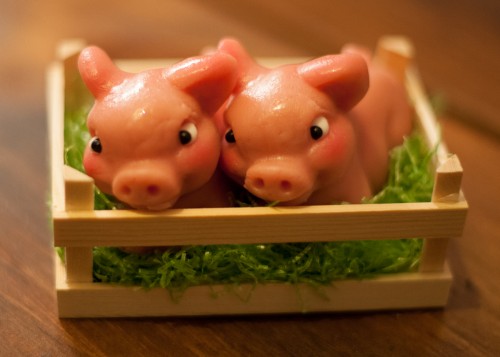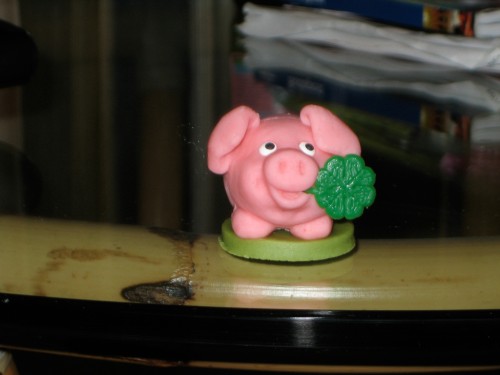
Marzipan pigs in a pen
The first time I received a marzipan pig was at a hotel in Budapest. My husband and I returned to our hotel room early one evening and noticed a cheerful pink pig. We were already amused about the different holiday customs and confusing (to us) language, so receiving a pig was just one more delightful event.
It turns out in some countries, mostly Germany, Norway and Denmark, a gift between Christmas and New Year’s of a marzipan pig symbolizes good luck and fortune for the upcoming year. The pigs frequently have four-leaf clovers, coins or other symbols of good luck in their mouths.

The Hungarian marzipan pig
How did this begin? Maybe with Germany’s common saying, “ich habe Schwein gehabt”, or, “I have had pig.” Basically, it means you’ve been lucky. The expression is believed to have originated with farmers, who considered themselves fortunate to have a pig and therefore meat to take them through the winter. In the late 19th century the Glucksschwein, or lucky pig, began showing up on German greeting cards, Christmas ornaments and edible treats including chocolate and, obviously, marzipan.
Marzipan is a claylike paste of almonds and sugar that is typically shaped into decorative items such as flowers, fruits and, apparently, animals. Spain and Germany are especially famous for their marzipan.
14 Responses to Marzipan Pigs